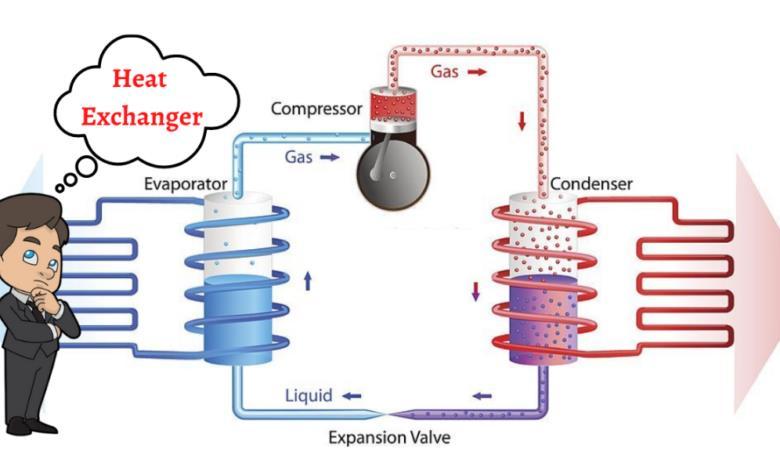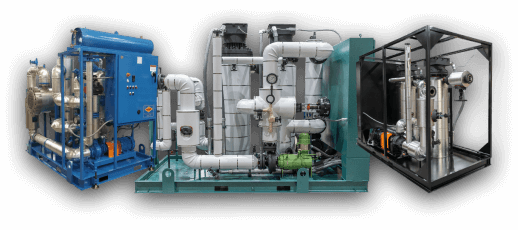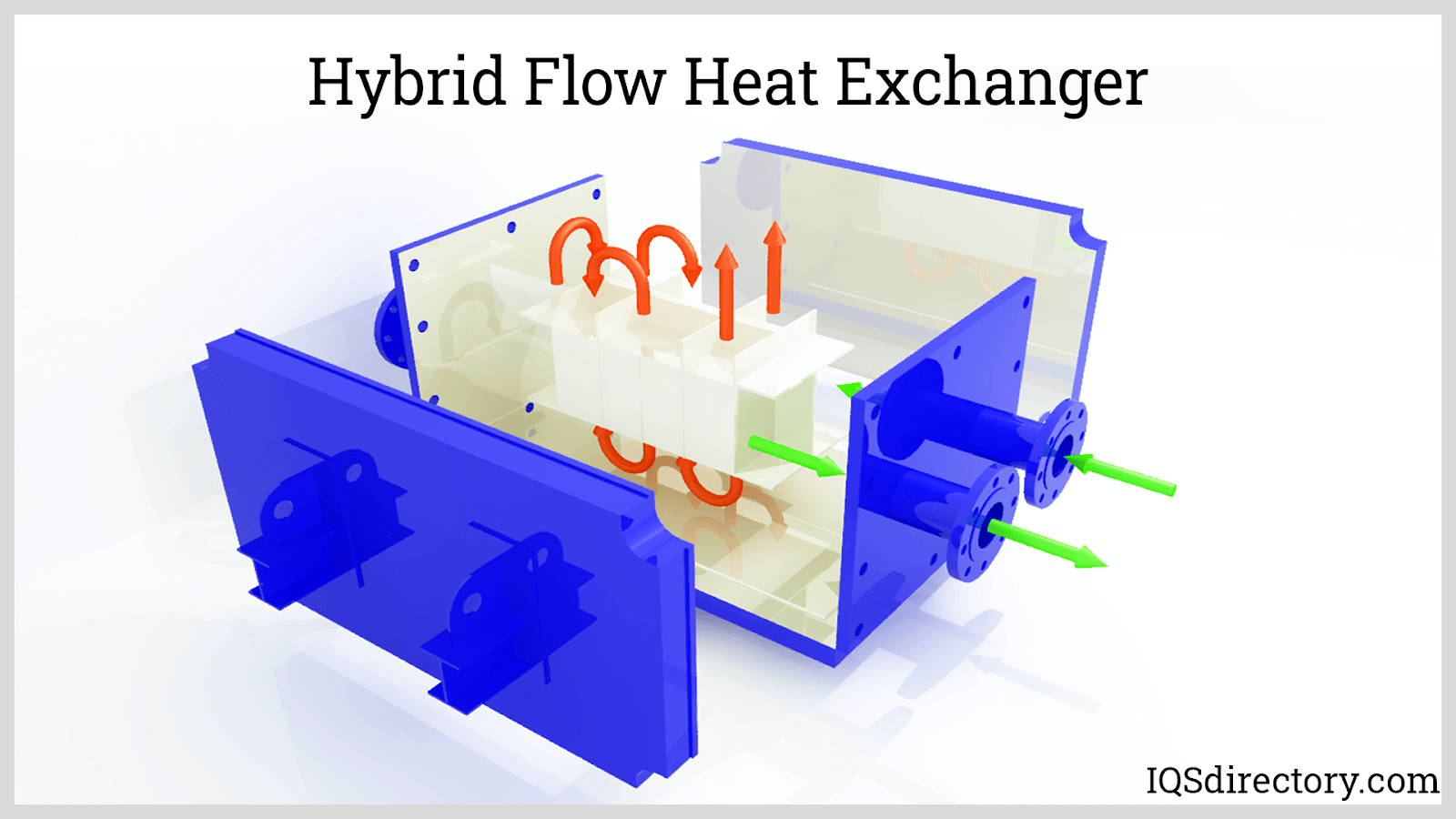Are DVS Heat Transfer Systems Built for High-Performance Electronics Cooling?
Advancements in Heat Transfer Solutions: What You Need to Know for Optimal Efficiency
Technologies in Heat transfer systems are changing performance throughout numerous markets. Advanced products like graphene and nanofluids assure substantial renovations in thermal conductivity. Meanwhile, the integration of IoT and artificial intelligence offers chances for real-time tracking and enhanced power effectiveness. Nevertheless, the landscape of thermal monitoring is rapidly progressing (DVS Heat Transfer Systems). Understanding these advancements is necessary for accomplishing suitable system efficiency and sustainability in the future. What details advancements are shaping this improvement?
Arising Materials for Enhanced Heat Transfer

Advanced Heat Exchanger Styles
While conventional Heat exchangers have offered their purpose in different applications, advanced styles are now emerging to meet the increasing demands for efficiency and performance. These ingenious styles, such as plate, shell-and-tube, and finned-tube Heat exchangers, integrate improved area and boosted flow patterns to increase thermal transfer rates. Additionally, portable layouts permit lowered space needs without compromising effectiveness. Advanced products, such as composites and corrosion-resistant alloys, furthermore enhance longevity and performance under severe conditions. Additionally, simulation modern technologies and computational liquid characteristics are increasingly employed to improve these designs, making sure peak Heat transfer qualities. As sectors seek to reduce energy usage and take full advantage of outcome, the fostering of sophisticated Heat exchanger layouts is crucial in accomplishing these goals.
The Function of Nanotechnology in Heat Transfer
Nanotechnology plays a necessary role in enhancing thermal conductivity within Heat transfer systems. By controling products at the nanoscale, researchers have actually accomplished significant enhancements in power performance. These innovations not just maximize performance but additionally add to more sustainable power options.
Boosted Thermal Conductivity
Significant improvements in thermal conductivity have emerged through the application of nanotechnology, changing Heat transfer systems throughout various markets. By incorporating nanoparticles into Heat transfer liquids and products, scientists have achieved impressive rises in thermal conductivity. These nanoparticles, such as carbon nanotubes, graphene, and metal oxides, boost the Heat transfer properties as a result of their high surface location and distinct thermal features. The resulting composites exhibit enhanced efficiency in applications varying from electronics cooling systems to renewable energy innovations. The capability to tailor the size, form, and structure of nanoparticles enables for optimized thermal administration solutions. Because of this, nanotechnology remains to play a pivotal role in the development of much more efficient and effective Heat transfer systems, leading the way for enhanced industrial applications.
Power Efficiency Improvements

Integration of IoT in Heat Transfer Systems
The combination of IoT in Heat transfer systems presents the implementation of wise sensors that enhance functional effectiveness. These sensing units make it possible for real-time data monitoring, enabling immediate modifications and optimizations. This technological innovation has the potential to substantially enhance efficiency and energy monitoring in Heat transfer find out this here applications.
Smart Sensors Execution
As Heat transfer systems progress, the combination of smart sensing units through the Web of Points (IoT) has emerged as a transformative method. These sensing units make it possible for real-time surveillance of pressure, flow, and temperature prices, enhancing system efficiency and dependability. By accumulating and transmitting information, they facilitate aggressive maintenance, lowering the risk of system failings. Additionally, clever sensors add to power savings by refining functional specifications based upon environmental conditions. Their capability to analyze anomalies and fads enables notified decision-making, making certain peak efficiency of Heat transfer systems. As markets significantly adopt this technology, the implementation of clever sensing units stands to reinvent exactly how Heat transfer systems are managed, paving the means for better sustainability and boosted performance end results.
Real-Time Data Monitoring
Just how can real-time information keeping track of improve the performance of Heat transfer systems? By integrating Internet of Things (IoT) technology, Heat transfer systems can take advantage of continual data collection from clever sensing units. This real-time monitoring permits instant evaluation of temperature, flow, and pressure rates, allowing drivers to identify inefficiencies quickly. Consequently, modifications can be made to enhance efficiency, decrease energy consumption, and extend equipment lifespan. Furthermore, predictive upkeep can be carried out, lessening unanticipated downtime and costly repairs. The ability to picture performance metrics with dashboards boosts decision-making, promoting a positive method to system management. Ultimately, real-time data monitoring not only enhances functional effectiveness but additionally adds to sustainability goals within commercial procedures.
Energy Efficiency and Sustainability Trends
Power effectiveness and sustainability fads are improving the landscape of Heat transfer systems, driving advancement and compliance throughout various markets. Organizations are increasingly focusing on energy-efficient styles to decrease functional expenses and lessen ecological influences. The assimilation of renewable energy resources is ending up being extra common, making it possible for Heat transfer systems to operate sustainably while meeting governing requirements. In addition, innovations in modern technologies and products promote lower power intake and boost general efficiency. Lifecycle evaluations are likewise gaining traction, permitting firms to evaluate the environmental influence of Heat transfer systems from manufacturing to disposal. This emphasis on sustainability not only supports corporate responsibility yet additionally positions companies competitively in a market where customers progressively prefer environment-friendly services. Subsequently, energy performance and sustainability remain critical considerations for future growths in Heat transfer technology.
Technologies in Thermal Monitoring Solutions
While the need for effective Heat transfer remains to rise, innovations in thermal monitoring remedies are emerging to resolve both performance and sustainability difficulties. Advanced materials, such as phase change materials and nanofluids, are being developed to improve Heat transfer efficiency - DVS Heat Transfer Systems. These products boost thermal conductivity and permit much better temperature policy in various applications. In addition, technologies like active top article thermal control systems are getting grip, allowing real-time adjustments to handle Heat flow efficiently. These systems add to energy savings and decrease the ecological influence of thermal procedures. In addition, the combination of IoT in thermal management assists in tracking and predictive upkeep, making sure maximized performance and longevity of Heat transfer systems. Generally, these advancements represent considerable strides toward more lasting thermal administration practices
Future Directions in Heat Transfer Modern Technology
Arising developments in thermal monitoring remedies signal an encouraging future for Heat transfer innovation. Scientists are progressively concentrating on developing products with premium thermal conductivity and enhanced energy efficiency. Advancements such as nanofluids, which contain suspended nanoparticles, use substantial improvements in Heat transfer efficiency. Furthermore, the combination of wise materials that adapt to differing temperature level problems is obtaining grip, permitting for more responsive and reliable systems. The rise of additive production techniques is likewise enabling the layout of complicated Heat exchanger geometries that maximize fluid flow. The execution of machine knowing formulas is expected to change the optimization of Heat transfer systems, helping with predictive maintenance and efficiency improvement. Jointly, these innovations are positioned to transform the landscape of Heat transfer technologies in various sectors.

Regularly Asked Concerns

How Do I Select the Right Heat Transfer System for My Application?
Selecting the ideal Heat transfer system entails assessing application requirements, consisting of temperature varieties, fluid homes, and effectiveness needs. Evaluating system kinds, upkeep factors to consider, and cost-effectiveness also plays an important duty in making a notified decision.
What Are the Maintenance Requirements for Advanced Heat Exchangers?
Maintenance requirements for advanced Heat exchangers typically consist of normal examinations, keeping track of for leakages, cleaning of surface areas, and ensuring ideal flow prices. Following maker guidelines warranties Visit Website efficient operation and prolongs the devices's life expectancy.
How Do Environmental Elements Impact Heat Transfer Performance?
Ecological elements significantly influence Heat transfer efficiency. Variations in temperature, humidity, and air movement influence thermal conductivity and convective Heat transfer, eventually affecting system efficiency and demanding consideration throughout the style and operation of Heat transfer systems.
What Safety And Security Requirements Put On Heat Transfer Solutions?
Safety criteria for Heat transfer systems normally consist of standards from companies such as ASME and ASTM. DVS Heat Transfer Systems. These criteria address products, style, and functional practices to guarantee dependability, efficiency, and security versus risks in numerous applications
Exactly How Can I Repair Common Heat Transfer System Issues?
Repairing typical Heat transfer system problems entails checking for leakages, ensuring appropriate fluid circulation, checking insulation honesty, and verifying temperature differentials. Determining these elements can help maintain system effectiveness and stop additional problems.
Nanotechnology plays an essential role in boosting thermal conductivity within Heat transfer systems. Considerable innovations in thermal conductivity have actually arised with the application of nanotechnology, reinventing Heat transfer systems across different industries. Advancements in thermal conductivity through nanotechnology have paved the means for remarkable renovations in energy effectiveness within Heat transfer systems. Power performance and sustainability fads are reshaping the landscape of Heat transfer systems, driving technology and compliance across various markets. The assimilation of IoT in thermal administration promotes surveillance and anticipating maintenance, making sure maximized performance and longevity of Heat transfer systems.